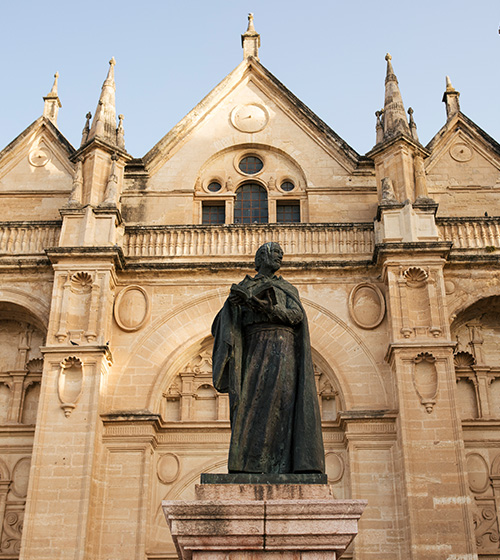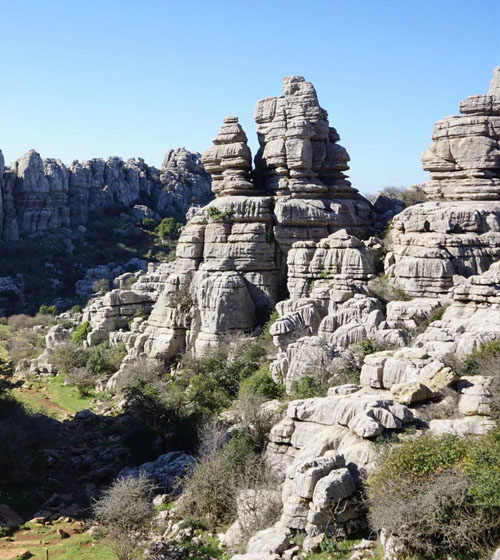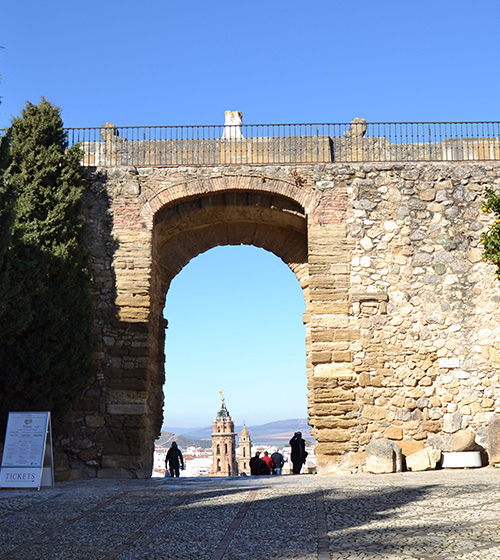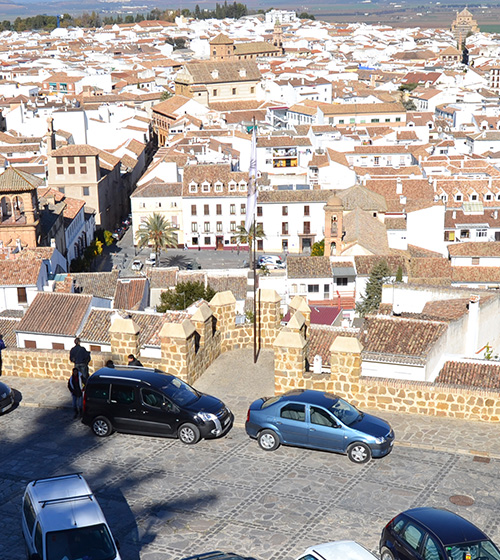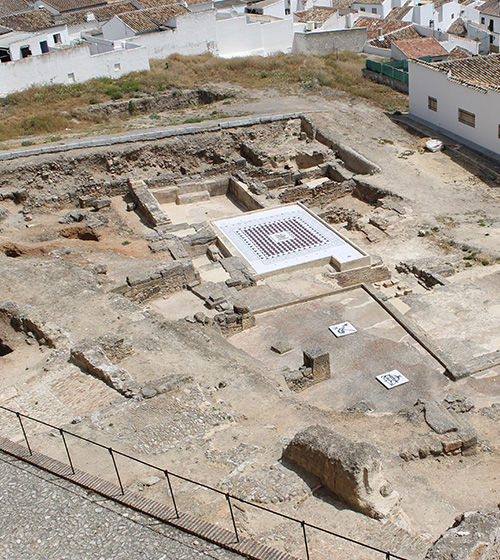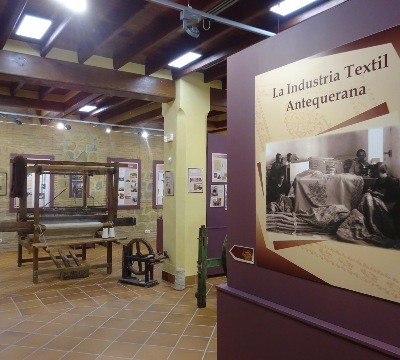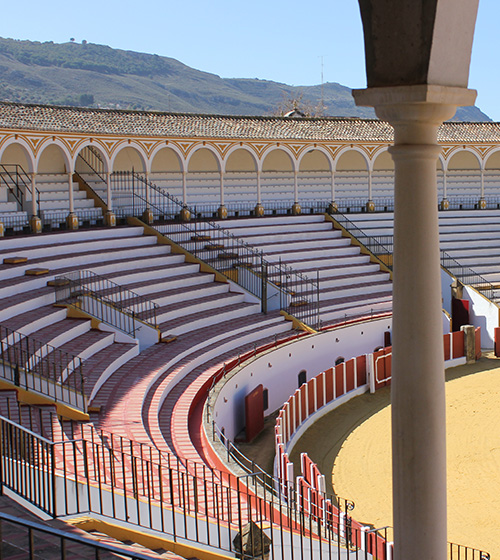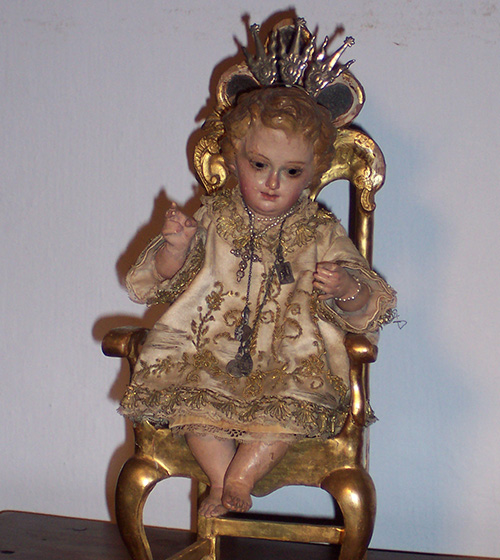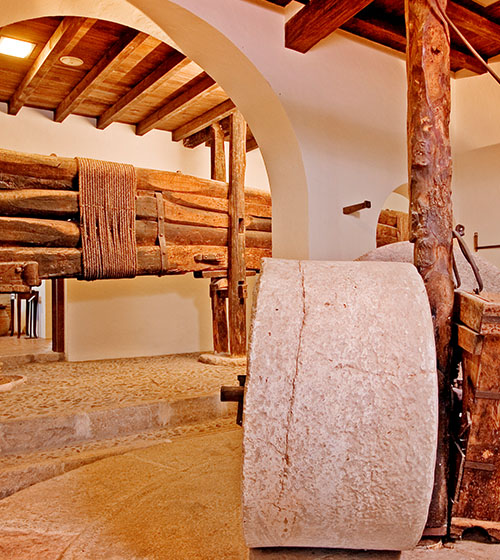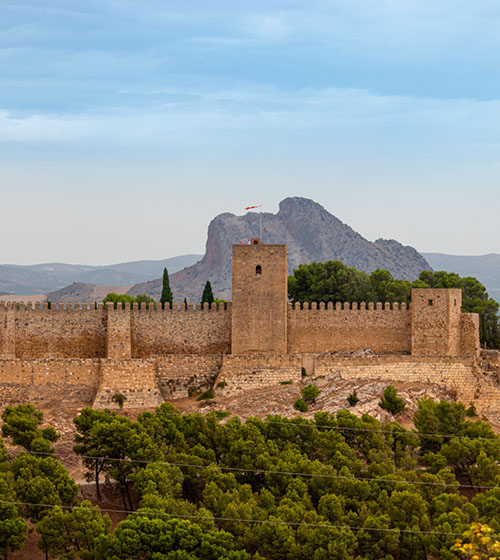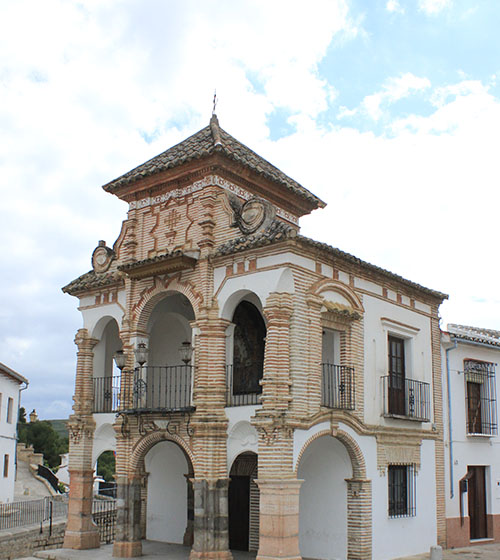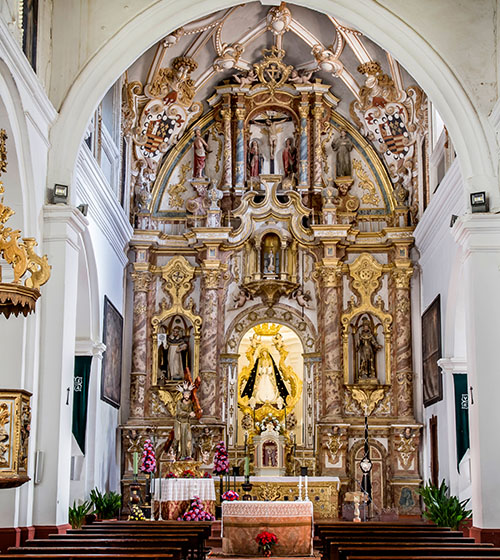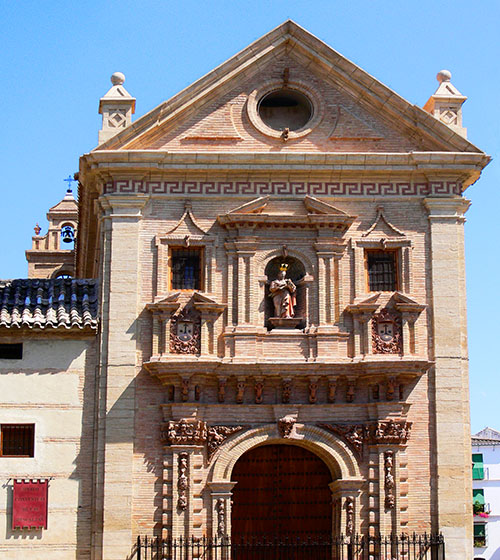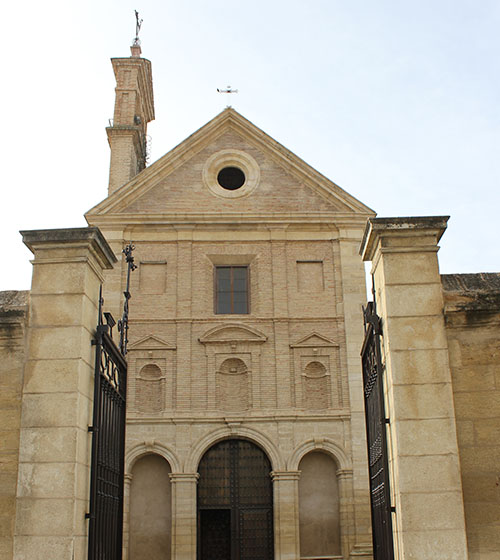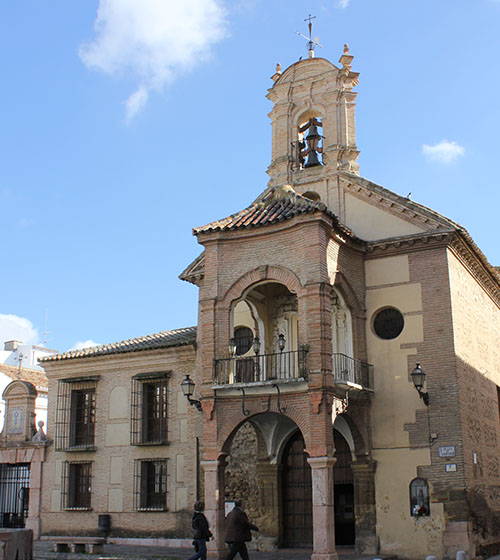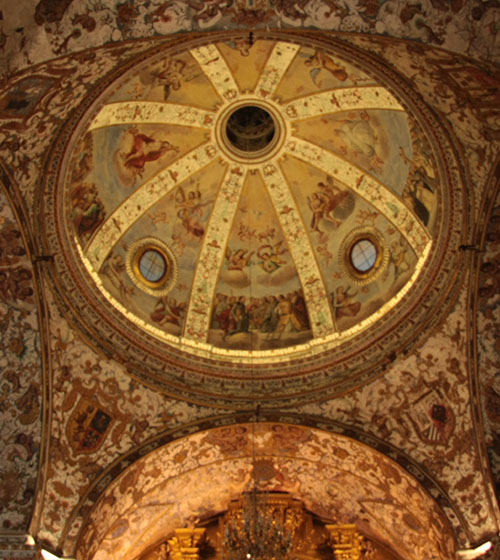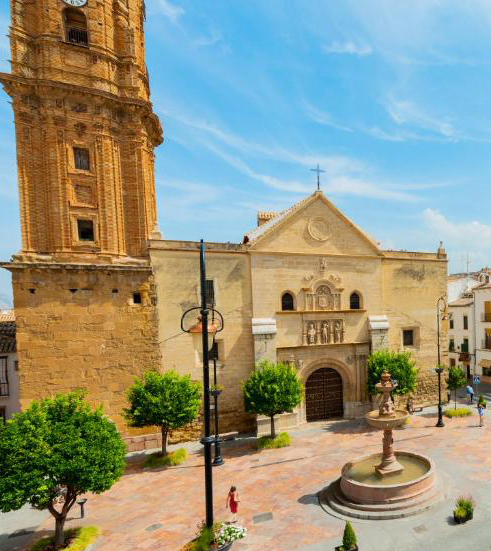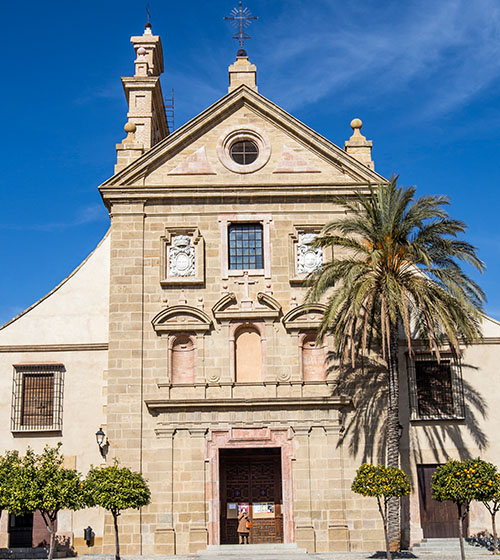Real Colegiata de Santa María la Mayor
The importance of this building lies in being the first to be conceived within the Renaissance style in Andalusia. It is truly an exceptional work for its proportions and quality of its design. In it, two different style criteria coexist; on the one hand we find elements that remind us of the late Gothic and on the other its traces and various decorative elements already correspond to the new style that emerged in Italy.
Plaza de Santa María s/n Antequera, Málaga
Real Colegiata de Santa María la Mayor
The Torcal of Antequera
Natural Park since July 18, 1989, which provides the area with special protection for its important natural values: geomorphology, flora, fauna and landscape.
El Torcal Alto Visitor Center, Road A-7075
The Torcal of Antequera
Arch of the Giants
The Arch of the Giants located in Antequera (province of Malaga, Spain) is a construction made by municipal initiative in 1585 within the approaches of humanism, in order to replace a bend access of the Muslim fence wanting to evoke with its great semicircular span the triumphal arches of the classical world.
Plaza de los Escribanos, Antequera, Malaga
Arch of the Giants
Almenillas Viewpoint
Located near the Arch of the Giants, it offers one of the most impressive panoramic views of the city.
Calle del Colegio, Antequera, Málaga
Almenillas Viewpoint
Roman Baths
Located in the historic center of the city. The discovery of these baths is the first reliable proof of the location of the Roman city of Antikaria under the current urban center. The excavation work began in 1988, as a result of the earthworks prior to the urbanization of the site, and has been developed until 1991 by the Antequera Workshop School.
Plaza Santa María la Baja. Antequera.
Roman Baths
Textile industry
The existence of the textile industry in Antequera is documented since the late fifteenth century, opting, over time, for wool manufactures, although with strongholds dedicated to silk and linen.
Calle Río Rosal, 15, Antequera, Málaga.
Textile industry
Bullring
This arena was built by the Society of the Plaza de Toros de Antequera, a society formed by amateur citizens who longed to have a permanent structure for the Fiesta until then held in public squares arranged with tablados and talanqueras. In 1847 the land was acquired and the works began under the direction of Manuel García del Alamo continuing them Rafael Mitjana, author of the Plaza de Toros Vieja de Málaga.
Paseo María Cristina, Antequera, Málaga
Bullring
Blessed Mother Carmen Exhibition
This museum does not offer works of art but “a space for silence and recollection”, dealing with a chapel where objects and memorabilia of Mother Carmen of the Child Jesus are exhibited.
Carrera Madre Carmen Street, 4, Antequera, Malaga
Blessed Mother Carmen Exhibition
DCOOP Oil Museum
Picking up the olive tradition of the region of Antequera, where the olive grove is the main economic activity, Dccop -located in our municipality- decided to pay tribute to the culture of oil in these lands, through the creation of the Dcoop Museum.
Road Cordoba - Malaga s/n Antequera, Malaga
DCOOP Oil Museum
Monumental Site of the Alcazaba
The citadel of Antequera can date its origins to Roman times. It was declared an Asset of Cultural Interest in 1985 in the figure of Monument.
Plaza de los Escribanos, Antequera, Malaga
Monumental Site of the Alcazaba
Virgen Socorro Tribune Chapel
The Plaza del Portichuelo is, without any doubt, one of the most interesting sets of Andalusian traditional urbanism, highlighting as an element of maximum singularity the Chapel-Tribune of the Virgen del Socorro, built in 1715.
Portichuelo Square, Antequera, Malaga
Virgen Socorro Tribune Chapel
Monastery of San Zoilo
The Catholic Monarchs, by Royal Decree given in Granada on September 18, 1500, granted license to the city to cede land to the Observant Franciscans, to found the monastery of San Zoilo and the orchard.
San Francisco Square, Antequera, Malaga
Monastery of San Zoilo
Convent of San José
The Discalced Carmelites of Santa Teresa founded a house and convent in Antequera in 1632, although the current church was built between 1707 and 1734. Of the whole exterior, the little door of the foundation’s rule of time and, of course, the wonderful baroque façade of the church, attributed to Tomás de Melgarejo, stand out. This façade responds to the Carmelite compositional scheme, although it also results from a remarkable paganism in its iconographic programs not in accordance with the spirit and rule of the Order.
Plaza de las Descalzas, Antequera, Málaga
Convent of San José
Convent of Bethlehem
This convent belonged to the Discalced Carmelites until the nineteenth century, when it became occupied by the Poor Clare Sisters, who still reside in it as cloistered nuns and are dedicated to some crafts, including the elaboration of mantecados and sweets in general. This temple that we can admire today was already being built in 1628 by the Portuguese Gonzalo Yáñez, and has a sober façade, carved in stone and brick combined.
Calle Belén, 6, Antequera, Málaga
Convent of Bethlehem
Church of Santiago Apóstol
The church of Santiago was erected as a simple hermitage in 1519, and since 1822 it has been a parish church. The temple that has come to us must be from the mid-eighteenth century, and may be the work of the master builder Cristóbal García.
Santiago Square, Antequera, Málaga
Church of Santiago Apóstol
Church of Nuestra Señora de los Remedios
The first foundation in Antequera of the Third Franciscans was in 1519, in a place known as Las Suertes. There began to be highly venerated the small image of the Virgen de los Remedios who was named Patroness of the city in 1546. As a result of the remoteness of the location of the monastery and the increase in the cult of sculpture, the friars were encouraged to move to Antequera in 1607.
Calle Infante Don Fernando, 72, Antequera, Málaga
Church of Nuestra Señora de los Remedios
Collegiate Church of San Sebastián
The Collegiate Church of San Sebastián is the result of numerous additions and reforms over time. Its construction began in 1548, directing the works the architect Diego de Vergara. The year 1692 was important for this temple since it is the moment in which the Insigne Colegial is moved from Santa María to this church of San Sebastíán, with which it will undergo a great transformation and embellishment.
Plaza San Sebastian, 6, Antequera, Malaga.
Collegiate Church of San Sebastián
Parish of La Santisima Trinidad Antequera
The order of the Discalced Trinitarians founded this convent in Antequera on August 2, 1637. The current temple was built between 1672 and 1683, owing the traces to the architect friar of the same order, Fray Pedro del Espíritu Santo. The church model that is followed is the one that derives from the Incarnation of Madrid, the work of Juan Gómez de Mora. The façade is a rectangle framed by two smooth pilasters and crowned by a triangular pediment, articulating the central panel in three horizontal zones and three streets.
Calle Cruz Blanca, 18, Antequera, Málaga
Parish of La Santisima Trinidad Antequera
